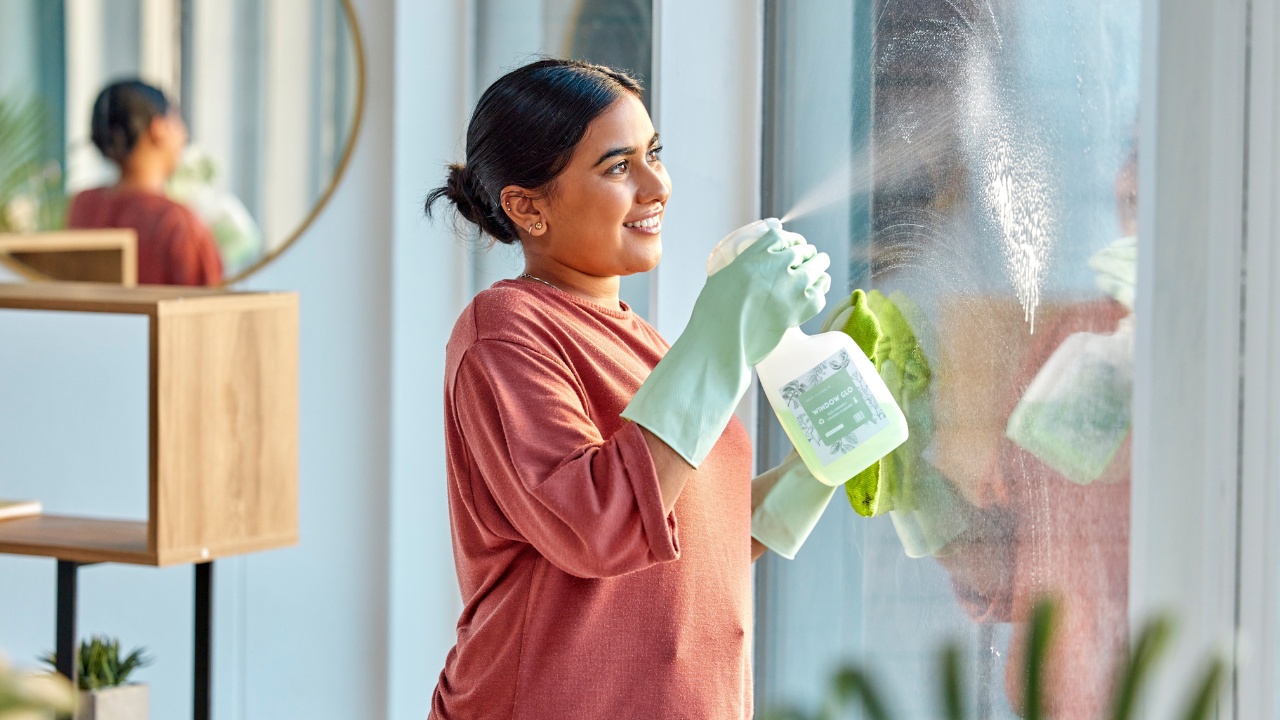24 Household Items You’re Not Washing but Should Be

The average home is teeming with bacteria and fungi. The vast majority of that is completely harmless, but it only takes one or two cases of nasty germs to make you sick or damage your appliances.
We’re taking a look at the items you might not be regularly cleaning but really should be! We’ve taken into account statistics and items that everyone uses daily. There are over 2,000 species of fungi and 7,000 species of bacteria, so there’s a good reason to be relatively careful.
Reusable Water Bottle

A study showed that the average reusable water bottle contains around 20.1 million bacteria per ml; the average public toilet has just 600 per ml!
Of course, the bacteria in your water bottle is far less dangerous, but it’s a good indicator that a lot is growing in there that should be cleaned out from time to time. If not, you risk giving yourself an upset stomach. If it smells a bit funky, wash it!
Humidifier or Dehumidifier Filters

The filters on your dehumidifier can contain mold and allergens that trigger allergies to you, your family, and your pets. They can also promote the growth of mold in the home. It’s easy to clean them out, just pull out the filter and run them under hot water, scrubbing until clean.
For humidifiers, you should also clean out the water container to ensure you’re not pushing around contaminated water vapor.
Coffee Machine

Did you know that around 50% of water reservoirs and coffee ground containers can harbor nasty bacteria, mold, and yeast? That can be the source of allergies and even infections. Old coffee grains can even spawn maggots. Yuck.
We advise you to empty your machine’s water reservoir, remove the filter, put the parts in a dishwasher, and sponge out any remaining grime.
Shower Curtain

A study showed that shower curtains contain 60 times more bacteria than the average toilet seat! But aside from the microscopic scale, you’ll notice that shower curtains can get gross and dirty quickly.
Most people throw them out and replace them with new ones. But you don’t need to add more plastic to a landfill because shower curtains can survive a gentle washing machine cycle or a simple rinse and sponge.
Sponge

Sponges can contain around 362 species of bacteria after regular use. You don’t want to be spreading that around the kitchen. But sponges don’t need to be thrown out instantly. A hot cycle in the dishwasher can clean them out and give them a new lease of life.
May I also suggest Scrub Daddy? That sponge is an enduring hero of the cleaning world and can be cleaned easily in a dishwasher.
Dishwasher

Dishwashers can contain all sorts of bacteria, including Pseudomonas, Escherichia, and Acinetobacter, as well as fungi such as Candida, Cryptococcus, and Rhodotorula. We don’t expect you to know what these are, but it’s not something you’ll want on your supposedly clean utensils and cutlery.
All this grime and dirt can also cause nasty smells and damage your dishwasher over time. It’s advised that you run a maximum temperature cycle with a dishwasher cleaning product (while it’s empty) and then wipe away any remaining dirt. You might even need to unscrew the spraying arms to wash them, too.
Pillows

Pillows can home dust mites, bed bugs, fleas, and micro bacteria. If you notice you’re getting allergies at night, it might be time to wash your pillow.
Most pillows should have a label indicating how to wash them and should even be able to go through a hot dryer cycle. That’s where you put your head every night!
Toothbrush Holder

Residual water on toothbrushes collects in the bottom of toothbrush holders, where it grows into bacteria and brown or gray sludge. Ew. Rinse it or throw it in the dishwasher every couple of weeks, or you potentially could get some of that bacteria (and even E. Coli) in your mouth the next time you wash your pearly whites.
Eyeglass Lens Cloths

Eyeglass lens cloths build up oils and bacteria and need to be cleaned from time to time. You can throw them in the washing machine or even wash them with dish soap. Don’t use fabric softener and don’t put them in the dryer. You might even notice the cloth is far more effective after cleaning it.
Bath Mat

Bath mats sit on the floor, harboring bacteria and mold which grows fast because they rarely dry out properly. You need to wash them regularly as you would with towels. Throw them on a hot cycle, and you’ll also see your bath mat looking much nicer from now on. And your bathroom will be less stinky!
Dryer Lint Vent

Wash your lint trap, people! These vents are a genuine fire hazard if not cleaned out regularly. You just need to pull it out and run water over it under the sink, scrubbing until it’s clean. You’ll quickly see how much that lint blocks water from getting through — now imagine that’s hot air!
You’ll also extend the life of your dryer.
Refrigerator

Pathogenic bacteria can grow in refrigerators, causing foodborne illnesses and spoilage bacteria. They can be invisible in taste, smell, and appearance so you’ll never know. Therefore, it’s wise to wash your fridge shelves every few months to minimize the growth of bacteria.
This can be achieved by using hot water and dish soap.
Floor

Researchers report that an average of 421,000 different forms of germs are found on the soles of shoes and E.coli bacteria in 96%! You might not wear your shoes inside, but these germs can be spread from the doorway to the rest of the home through regular use.
Also, washing your floor from time to time can keep it looking sparkly and clean. You’d be surprised how much floor appearance can change without you noticing.
Plushies

Plushies and bears have quite the life, traveling in cars and public transport and then cuddling every night with your kids. That means germs and dirt on your kid’s face. So, it could be wise to wash their beloved plushies from time to time.
We know that stuffed animals need to keep their comforting smell, so it’s probably best not to do it often. If your kid is upset by the idea, you can always make a fun game of “giving it a bath” with some warm water and detergent. Just make sure they don’t contain any batteries or electronics!
Kitchen Faucet

The kitchen faucet is one of the most contaminated things you’ll touch in your home, with over 28 million bacteria.
So, take the time to wash it with some bacteria-killing spray and a sponge. Otherwise, you’ll be washing your hands before cooking and simply reapplying germs when you turn the faucet off!
Curtains

Curtains and drapes are big collectors of dust. They can start to smell musty and look off-color if not cleaned occasionally. You’ll need to get out a step stool to reach them down of course, but after that, it’s simple enough — just throw them in the washing machine with cold water and some detergent. We advise the delicate cycle.
Dog Toys

Dog toys get gross, with dog germs, food, dirt, and bacteria potentially being dragged and thrown all over your home. They’re apparently one of the dirtiest items you’ll have in your house! You can wash them easily though, by simply tossing them in the washing machine with some detergent.
Baseboard

We’re not concerned about germs and bacteria on baseboards but more about how quickly they could look damaged and tired. Even dust build-up can look unpleasant. So, when you’re doing your big home clean, get on your knees and quickly wipe away that dust and any stains. It’s easy enough with a damp sponge.
Duvet and Comforters

There are few better feelings than the soft embrace of a duvet. But be warned that they can be the home to bacteria, fungi, viruses, and bed bugs! Not to mention the saliva, sweat, and the rest.
Your duvet will fit in your washing machine, survive a warm wash (be sure to read the label first), and come out cleaner than ever! Ideally, you should do this once a month, but it may require a stain removal detergent.
Kettle

Kettles don’t need washing; they boil anyway, right? No. They need cleaning as they can build up limescale. If you’ve ever noticed having a sore throat after a tea or coffee, then that’s probably why. You may also notice little flakes of white in the kettle.
To remove it, throw in some descaling tablets or liquid and follow the instructions. Always remember to rinse it, boil a full kettle, and empty it before using it again.
Trash Can

Between the time you put spoiled food and other gross items in the trash and the time you empty it, bacteria and mold will have grown at a rapid rate. Sure, that’s going straight to a landfill, but what about your trash can? It’s still there, in your kitchen.
We advise that you hose down your trash can every few weeks to clear out the gross stains and liquids that build up, and then use some hot water and dish soap to kill the germs.
Kids Toys

Not all toys need washing, but those that get particularly dirty and germy should be taken care of. Disinfect and wash toys that have been around food or dirt to prevent your child from getting sick. It may also be useful to get a dirty toy container to regularly separate the good from the bad.
Fridge Door Handle

The average fridge door handle has 217,000 types of bacteria on it. That’s a lot, considering you’ll be opening it before preparing and eating food. Once again, the solution is to spray some bacteria cleaner and wipe it down with a paper towel. Voila, your food hygiene just improved.
Cell Phone

Cell phones and landline phones have around 9,600 types of bacteria on them. We don’t expect you to wash them every day. But, a wipe with some anti-bacterial spray from time to time (or they’re feeling particularly gross) is wise to clear out those nasty germs. It can be wise to get a new phone case, too; it might even make your phone feel new again.





